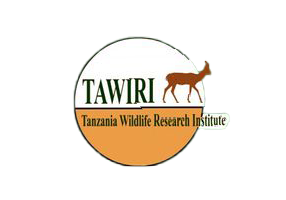TAWIRI conducted a survey to investigate the status, drivers and suggested mitigation measures on HEC in various zones in Tanzania to enhance the peacefully co-existence between humans and elephants. Four zones namely; Northern (Kilimanjaro and Arusha regions), Northwest (Mara and Kagera regions), Western (Katavi, Rukwa, Kigoma and Tabora regions) and Southeastern (Morogoro and Ruvuma regions) were surveyed.
A Cross-sectional questionnaire was administered to a total of 2,312 respondents covering 10 regions comprising 21 districts, 51 wards and 60 villages. Focus Groups Discussions (FGDs) were conducted involving a total of 160 participants in the Northwest Zone, 124 participants in the Northern Zone, 180 participants in the Southeastern Zone and 145 participants in the Western Zone making a total of 609 participants. These participants made a total of 60 FGD meetings distributed as 16, 12, 18 and 14 in Northwest, Northern, Southeastern and Western zones respectively. Wherever necessary direct observation was employed to qualitatively better understand the survey variables, that was used to complement and enrich on qualitative and quantitative information gathered.
Results showed that elephant crop raiding was the major type of HEC reported by about 85% of the studied population. Expansion of human settlements and agricultural activities close to PAs within a distance of 5km experienced high HEC incidences. The highest incidences of HEC occurred during crop ripening time, mostly in July for all zones. However, there were variations between zones, where some zones reported elephants visiting their villages throughout the year. Most people were killed or injured by elephants during the nighttime when guarding their farms or walking from one location/village to another. Livestock were attacked, killed or injured by elephants when sharing and/or competing for water resources especially during the dry season. Crop raiding and human attack incidences were generally increasing in all surveyed zones.
Drivers of HEC in surveyed zones were revealed to be close to PAs (very high incidences in nearby PAs), expansion of human settlements and agricultural activities in wildlife natural habitats, increased elephants’ population in some ecosystems, change of elephants feeding behaviuor and climate change.
Also, findings from questionnaire surveys revealed that the majority of respondents (72%) were aware of the consolation scheme implemented by the MNRT through its Wildlife Division. However, the main challenge of its implementation was that community did not know how the scheme operated (63.7%). In order to improve the scheme, the respondents found that the current consolation paid was meager compared to the actual loss incurred, hence, they recommended to the Government an increase in the amount to be paid to victims. Furthermore, cross-sectional questionnaire results showed that the common measures reported in mitigating HEC were guarding farms (24%), making noise (23.4%) and bright light (23.3%). Both questionnaire results and FGDs showed that most respondents were intolerant to elephants.
The following were specific requests from communities:
i. Capacity building to communities around PAs by providing them with training on how to protect themselves from dangerous and destructive wildlife, especially elephants.
ii. Reviewing current consolation scheme.
iii. Construction of permanent wildlife control centers with equipped rangers in areas known to have frequent incidents of HEC in order to control damages.
General observations and technical thoughts:
i. Conduct an in-depth study to understand the possibility of coexisting between humans and elephants.
ii. Establish guidelines for electric fencing operations.
iii. Improve record keeping in DGO offices across the country.
iv. Support the development of land use plans in the villages adjacent to the PAs especially with conflicts and reinforce their implementation.
v. Coordinate and collaborate with key stakeholders in solving the HEC problem.
vi. Relocate elephants from some areas outside PAs.
vii. Provide water sources for elephants inside some PAs.
It was concluded that HEC occurs pervasively in the country which entails the need for immediate government intervention through acquainting people living adjacent to PAs to co-exist with elephants. Alleviation of HEC requires the establishment of proper land use plans with adhesive implementation by villagers followed by government improvement of consolation scheme and establishment of well-equipped and committed wildlife control units in HEC locations.








 Users Today : 63
Users Today : 63 Users Last 7 days : 527
Users Last 7 days : 527 Users This Month : 668
Users This Month : 668 Total Users : 32956
Total Users : 32956